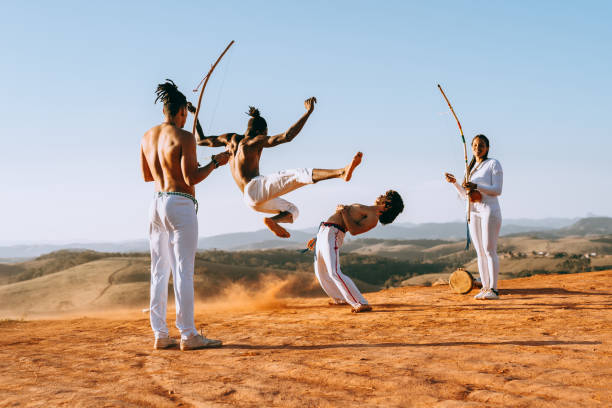Rediscovering the Art of Capoeira: A Dance, A Fight, A Community
Capoeira, a martial art that combines elements of dance, acrobatics, and music, is a unique and vibrant form of expression that has been around for centuries. While it has gained recognition globally, its roots and significance remain deeply ingrained in Brazilian culture. This article aims to delve into the rich history of Capoeira, its evolution over the years, and its current influence on sports and society.

A Rhythmic Rebellion: The Birth of Capoeira
Capoeira was born out of the struggle for freedom by African slaves brought to Brazil during the Portuguese colonization in the 16th century. The slaves cleverly disguised their martial arts training as a dance to avoid suspicion from their masters. This art form became a symbol of resistance and hope, a clandestine fight for freedom wrapped in the rhythm of music and dance.
From Taboo to Tradition: The Evolution of Capoeira
In the early 20th century, Capoeira was considered a criminal activity and was heavily suppressed by the Brazilian government. However, in the late 1930’s, it gained recognition as a national sport due to the efforts of Mestre Bimba, a revered capoeirista. Today, Capoeira is not only a symbol of Brazilian culture but also a source of national pride.
Modern Manifestations: Capoeira in Today’s Sports Landscape
Capoeira has now transcended its roots and found its way into modern fitness regimens worldwide. Its unique combination of martial arts, dance, and acrobatics provides a holistic workout, improving strength, flexibility, and coordination. Capoeira classes are now commonplace in gyms and fitness centers, offering a fun and effective alternative to traditional workout routines.
Beyond Physicality: The Social Impact of Capoeira
The influence of Capoeira extends beyond physical health. It promotes a sense of community, fostering social inclusion and cultural diversity. Capoeira circles or ‘rodas’ encourage interaction, respect, and equality among participants, regardless of their background or skill level. This martial art has indeed become a universal language, breaking barriers and uniting people across the globe.
Capoeira and its Future: A Dance of Continuity
As Capoeira continues to evolve, it retains its core values of respect, community, and freedom. Its future lies in its ability to adapt while staying true to its roots. Capoeira is more than a martial art or a sport—it’s a way of life, a dance of survival that has endured centuries and continues to inspire.
Capoeira is a fascinating testament to the resilience and creativity of the human spirit. It serves as a reminder of our capacity to transform adversity into art, to turn struggle into strength. As we continue to engage with and understand this rich art form, we don’t just learn a new sport or skill—we grasp a piece of history, a dance of defiance, a fight for freedom, and a story of survival.




